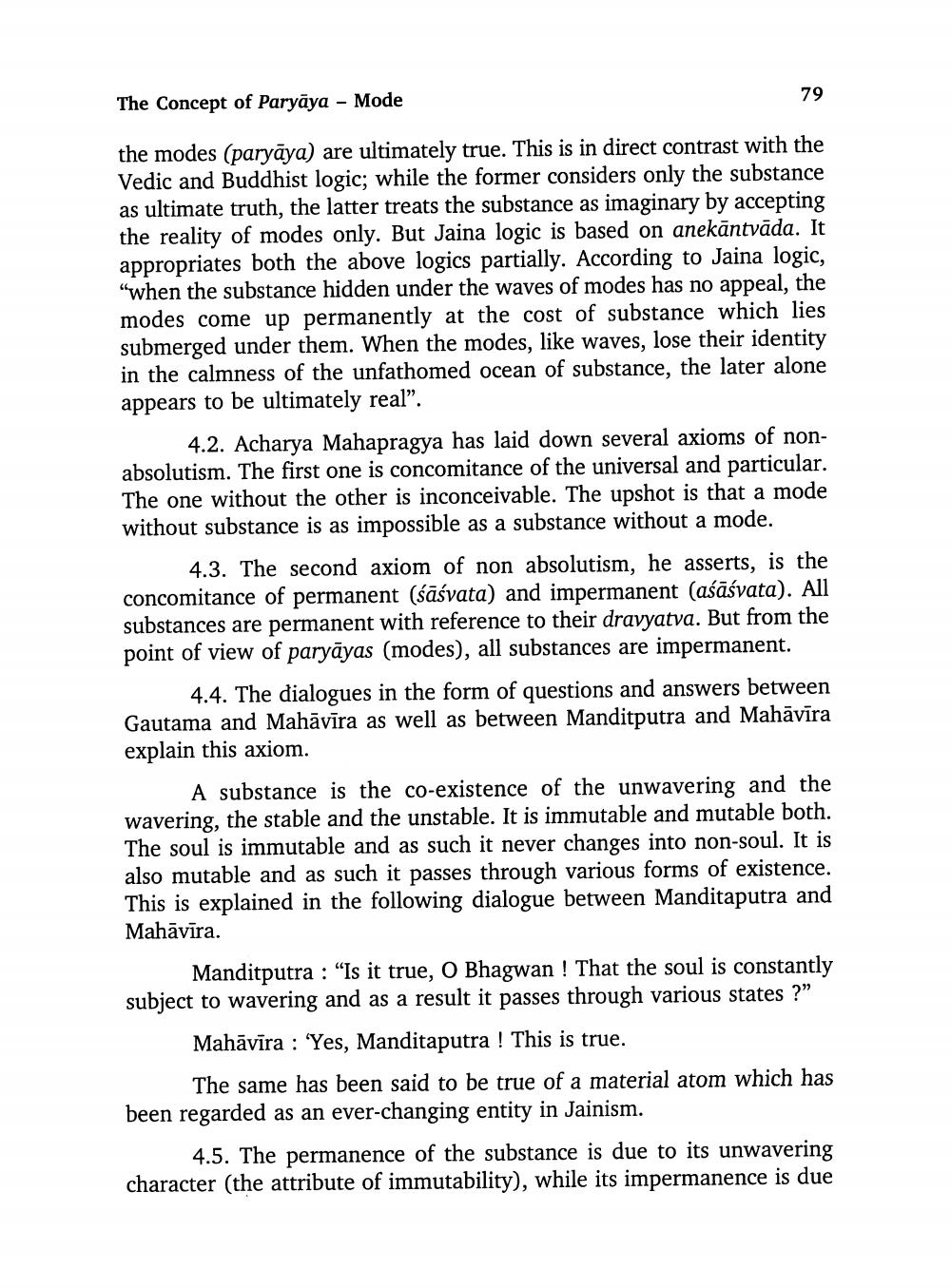________________ The Concept of Paryaya - Mode 79 the modes (paryaya) are ultimately true. This is in direct contrast with the Vedic and Buddhist logic; while the former considers only the substance as ultimate truth, the latter treats the substance as imaginary by accepting the reality of modes only. But Jaina logic is based on anekantvada. It appropriates both the above logics partially. According to Jaina logic, "when the substance hidden under the waves of modes has no appeal, the modes come up permanently at the cost of substance which lies submerged under them. When the modes, like waves, lose their identity in the calmness of the unfathomed ocean of substance, the later alone appears to be ultimately real". 4.2. Acharya Mahapragya has laid down several axioms of nonabsolutism. The first one is concomitance of the universal and particular. The one without the other is inconceivable. The upshot is that a mode without substance is as impossible as a substance without a mode. 4.3. The second axiom of non absolutism, he asserts, is the concomitance of permanent (sasvata) and impermanent (asasvata). All substances are permanent with reference to their dravyatva. But from the point of view of paryayas (modes), all substances are impermanent. 4.4. The dialogues in the form of questions and answers between Gautama and Mahavira as well as between Manditputra and Mahavira explain this axiom. A substance is the co-existence of the unwavering and the wavering, the stable and the unstable. It is immutable and mutable both. The soul is immutable and as such it never changes into non-soul. It is also mutable and as such it passes through various forms of existence. This is explained in the following dialogue between Manditaputra and Mahavira. Manditputra : "Is it true, O Bhagwan ! That the soul is constantly subject to wavering and as a result it passes through various states ?" Mahavira : 'Yes, Manditaputra ! This is true. The same has been said to be true of a material atom which has been regarded as an ever-changing entity in Jainism. 4.5. The permanence of the substance is due to its unwavering character (the attribute of immutability), while its impermanence is due




